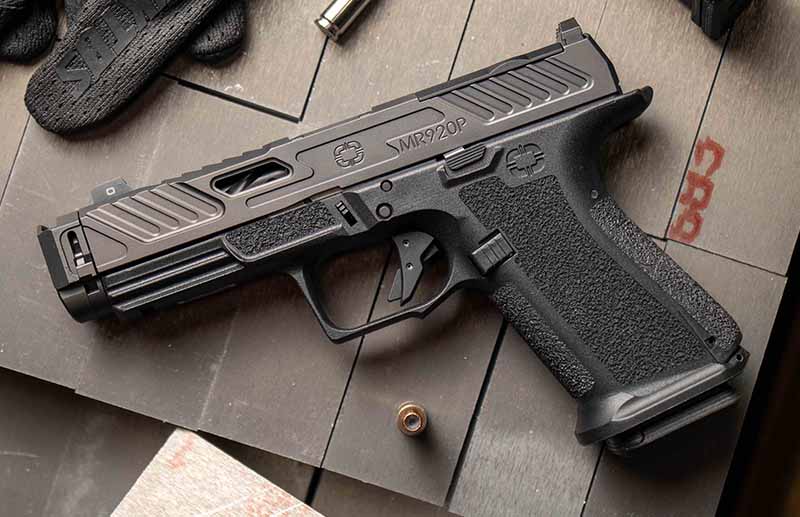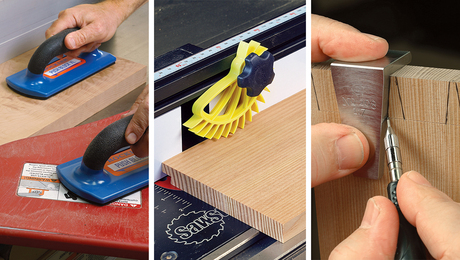Are you considering an artificial lawn? There’s a lot to love about synthetic turf, but it’s been getting some bad press lately. Learn more about the pros and cons of artificial turf before installing it in your yard.
What Is an Artificial Lawn?
Artificial grass is made from synthetic materials like nylon and polyethylene. Residential lawns made from artificial grass are increasingly popular because they’re durable, don’t have to be mowed, and require very little water to keep clean.
While they have several advantages, it’s important to consider artificial grass pros and cons. Homeowners are taking stock of the tradeoffs in choosing between artificial grass and a traditional lawn.
Pros of Artificial Turf for Lawns
You don’t have to look very long to find advantages to artificial grass lawns. Here’s an in-depth look at the advantages of artificial turf.
Low Maintenance
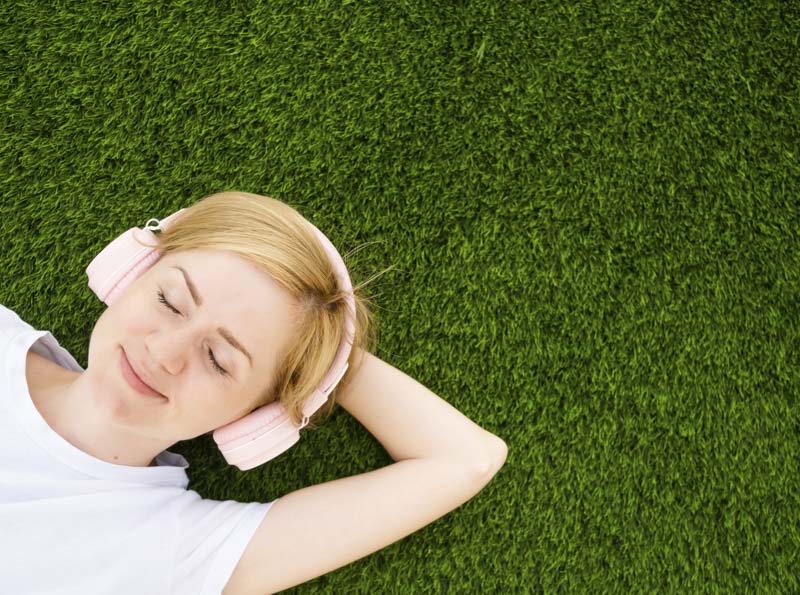
It’s common for the average person to spend part of their weekend caring for their lawn. Typically, homeowners spend about 70 hours per year caring for their lawns. That’s almost two full-time work weeks.
On the other hand, artificial lawns are extremely low maintenance. They don’t have to be mowed, fertilized, or watered. You might need to pull a few weeds around the edges occasionally, but for the most part, you can enjoy a carefree weekend by switching to artificial turf.
Durability
If you have pets or children, you’re probably aware of just how tender your lawn is. Pet urine spots, worn paths in high-traffic areas, and constant play take a total on the aesthetics of your lawn.
One of the pros of artificial turf is that you don’t have to worry about wearing it out, which is definitely a con of real grass. It’s resistant to wear and tear, and your pet can’t hurt it by using it as a potty. Artificial lawns maintain a consistent appearance with minimal maintenance, making them a great option for high-traffic areas, pet owners, and families with active children.
Water Conservation
Many regions in the United States face water shortages. It can be a problem for homeowners trying to grow a lush green lawn, especially in hot, dry climates in the summer. When you need to water your lawn the most, your municipality hits you with water restrictions, and your lawn turns brown.
According to the Environmental Protection Agency, the average household uses about 320 gallons of water daily, and a third of that is for outdoor use. Artificial grass uses very little water, and many people turn to it for this reason alone.
Allergen-Free
Allergies are another reason to consider an artificial lawn. If you have a family member who is allergic to bee stings, pollen, or mold and mildew, artificial lawns are an excellent way to reduce the allergens they are exposed to.
With regular cleaning, artificial lawns are much cleaner than traditional lawns. Some types of infill for artificial lawns have microbial properties that naturally prevent mold and mildew growth.
Pest Control
Natural grass lawns are a haven for pests, from lawn grubs to gophers and raccoons. They can harbor ticks, fleas, and fungi, all of which can impact your family’s health.
Pest control for lawns requires the use of various pesticides, insecticides, and fungicides, and these products are potentially harmful to people and pets. On the other hand, artificial lawns reduce the need for pesticides and other chemicals used to control pests.
Aesthetic Versatility
When your lawn turns brown in the hot summer sun, it’s hard to argue with the aesthetic superiority of an artificial lawn. Artificial lawns have come a long way since they were first used in the 1960s and 70s. They are much more attractive, and it can be hard to tell the difference between them and the real thing.
Cons of Artificial Turf
It might seem like artificial turf has nothing but pros, however, it’s not without its cons. Consider the following disadvantages of artificial turf.
High Initial Cost
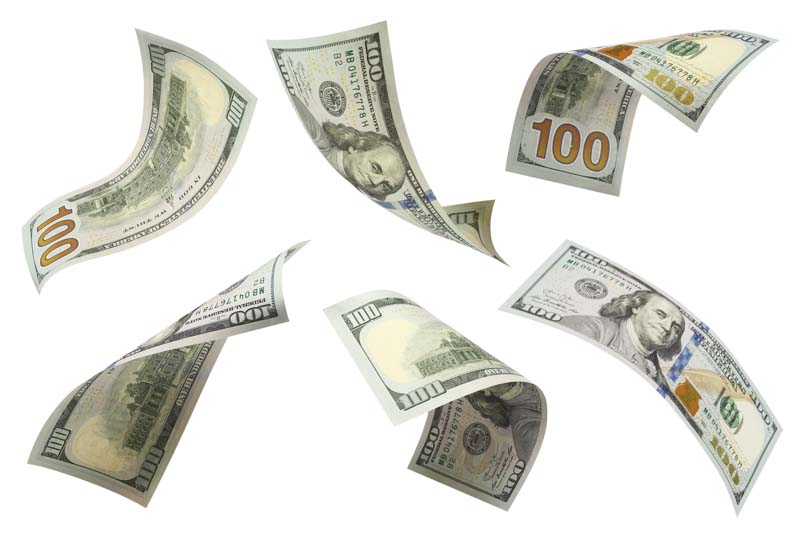

Artificial lawns are expensive to install. The average cost of artificial turf is $6.00 to $20.00 per square foot. Even if you install it yourself, there’s still a considerable upfront cost.
However, after the initial expenses of artificial grass, you’ll save money year after year. Typically, the break-even point for installing artificial lawns is about five years.
Heat Retention
A big pro of grass lawns is that they stay cool by transpiring moisture, but heat retention can be a significant con with artificial turf. Heat retention is even more problematic in southern climates, and artificial lawns can often become too hot to walk or play on.
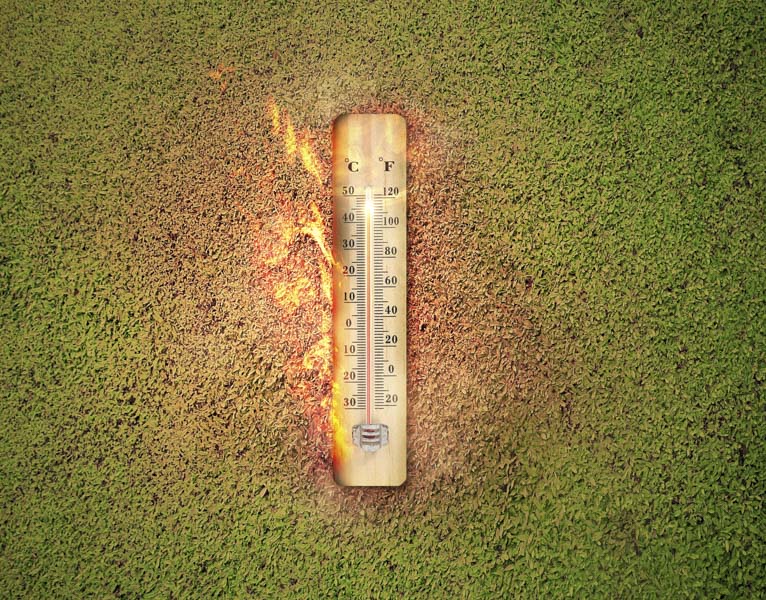

This issue affects more than just the usability of your lawn. Many homes rely on the cooling effect of the lawn around their home to impact their cooling costs on hot summer days, and with artificial turf, that’s not an option.
Fortunately, there are ways to mitigate the effects of heat retention with artificial turf. You can spray them down to cool them, use misting systems, or use an infill that doesn’t absorb and retain heat.
Environmental Impact
The environmental impact of artificial lawns is another significant disadvantage. Natural grass lawns can also impact the environment negatively, but there are ways to grow your grass in an eco-friendly way.
With artificial turf, it’s harder to reduce the environmental impact. Most of the problems are associated with the manufacturing processes and the migration of infill materials during runoff.
However, it might surprise many people to learn that artificial lawns are renewable and can be recycled.
Limited Realism
There’s a reason artificial lawns are called fake grass, and it’s not just the appearance of artificial turf that lacks realism. Many people are conditioned from an early age to enjoy the smell of cut grass and the luxurious feel of a freshly mown lawn on their toes.
Still, artificial lawns are more realistic than ever, with blades of grass that stand upright after years of heavy foot traffic. With the right infill, artificial lawns are more comfortable than they once were, and high-quality artificial lawns can be genuinely difficult to distinguish from real grass until you get up close.
Installation Challenges
For many homeowners, planting a new lawn isn’t much of a problem, even though it takes some hard work. On the other hand, artificial turf isn’t DIY-friendly. Installing synthetic turf is a much harder job than planting grass seed.
Even if you’re up for the physical challenge of installing synthetic grass, mistakes made during installation can result in an uneven appearance with sunken spots and loose edges.
Tips for Adding Artificial Turf to Your Backyard
Artificial turf transforms your backyard into a low-maintenance outdoor living space. You can ensure an aesthetically pleasing artificial lawn by choosing the right type of grass and installation method.
Choosing the Right Type
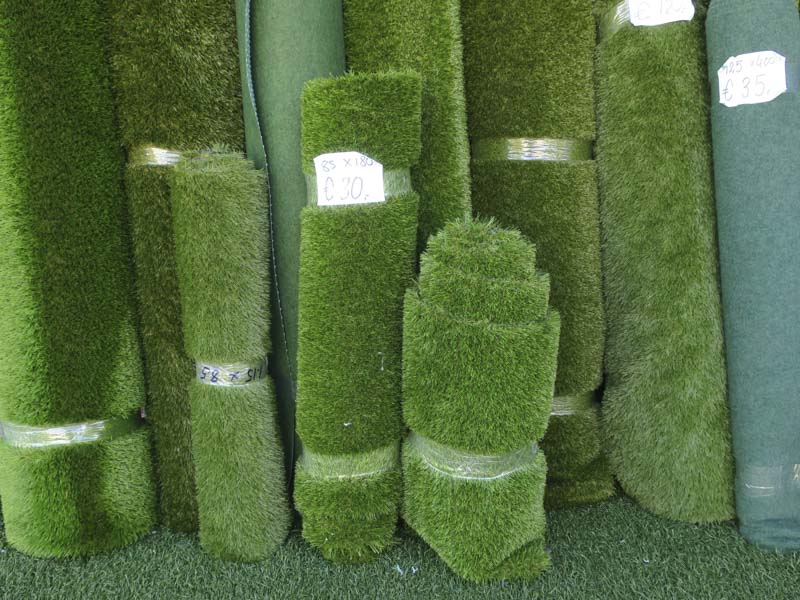

Artificial lawns are primarily made from three materials: nylon, polyethylene, and polypropylene. The best type of artificial grass depends on its intended use.
The most common type of artificial grass is polyethylene because it offers the best balance between durability, cost, and aesthetics.
Professional Installation
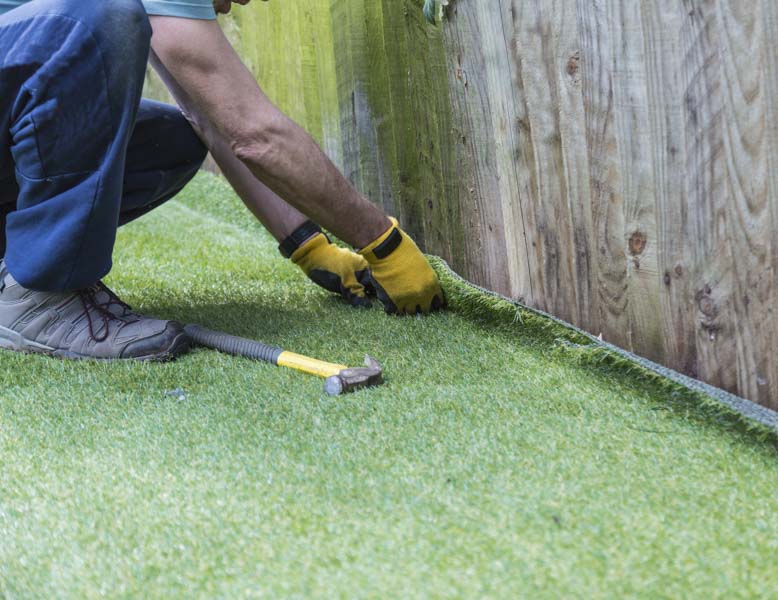

Installing artificial turf is complicated, and many people aren’t up to the challenge physically. It takes more time, labor, and expertise than most DIYers have to install an artificial lawn correctly.
Maintenance Guidelines
While artificial lawns don’t require much maintenance, they need some care to look their best.
- Debris removal–Regular raking or blowing leaves and twigs.
- Weeding–Occassionally requires manually pulling a few weeds by hand.
- Pet waste–Promptly cleaning and removing pet waste.
- Stain removal–Staying on top of stains by cleaning them immediately.
- Brushing–Using a special broom to keep blades upright.
- Rinsing–Removing dust from your lawn with water.
Who Should Consider Artificial Turf for Their Backyard?
Artificial turf isn’t for everyone, but it’s worth considering for many people. Learn more about who benefits most from artificial turf.
Homeowners with Busy Lifestyles
Artificial grass is the perfect solution for homeowners with busy lifestyles. While some people enjoy caring for their lawns, others want to be doing activities on the weekend, like camping, traveling, or going to events.
With an artificial lawn, you’ll have more time to devote to a busy lifestyle and never have to worry about your grass.
Eco-Conscious Individuals
Although there are environmental concerns with artificial turf, eco-friendly options are available that make it a better choice for people concerned about the environment.
Allergy Sufferers
People with allergies don’t get to enjoy the benefits of natural grass lawns and often miss out on the simple pleasures of being outdoors. With artificial grass, they can enjoy time in the yard relaxing, playing, or entertaining friends.
Families and Pet Owners
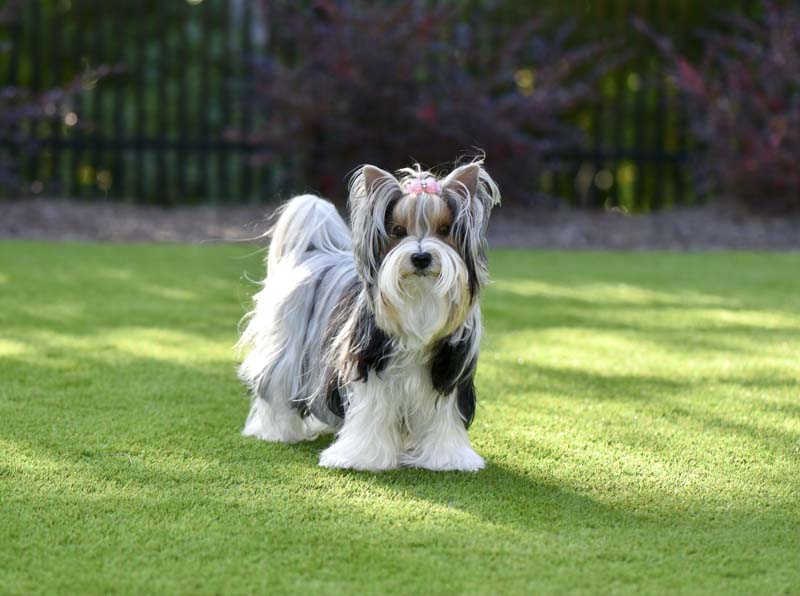

Families with children or pets are another group that will benefit greatly from artificial turf. Artificial grass is durable and can withstand the wear and tear of active children and pets.
People with pets, especially dog owners, often have problems with brown patches on their lawns caused by pet urine. With an artificial grass dog run, creating an area that’s easy to keep clean and maintains a pleasing visual aesthetic is easy.
Additional Considerations for Using Artificial Turf Residentially
Consider the following additional factors for using artificial turf.
Local Regulations
In some states, local governments and homeowners’ associations can ban artificial turf in residential areas. Before considering artificial turf for your yard, it’s wise to do some research and determine if it’s allowed by your HOA or local municipality.
Climate Considerations
Your climate region should factor into your decision to use artificial turf. It should also influence your decision about which type to use.
Artificial lawns are more popular in arid regions where grass is harder to grow. However, you can also run into problems with heat retention and UV rays unless you choose a product designed for your area.
Long-Term Investment
Artificial grass is a long-term investment with a break-even point of about four to six years. Removing it before you reach that point will cost you more than a traditional lawn, but if you keep it for 8 to 10 years, which is how long it typically lasts, you’ll save money on your investment.
Personal Preferences
Whether you install an artificial lawn is often a matter of personal preference. Artificial grass is pleasing to some people, and for many, it represents a lifestyle choice that gives them the freedom to live a more carefree life.
Frequently Asked Questions (FAQs) about the Pros and Cons of Artificial Turf
How does artificial turf compare to natural grass in terms of cost?
The average cost of installing artificial lawns is between $6.00 and $20.00 per square foot. The cost is much higher than DIY lawn seeding, which costs about $0.10 to $0.20 per square foot. Even if you were to sod your entire lawn, it would only cost you about $3.50 per square foot.
However, you must factor in ongoing maintenance and upkeep costs when comparing the cost of natural and artificial grass lawns. Traditional lawns cost money every year, while the cost of artificial lawns is all upfront.
Is artificial turf environmentally friendly?
There are environmental concerns with both natural and artificial grass lawns. With artificial lawns, there is the potential for runoff and infill material migration into nearby water sources. Natural grass lawns have similar drawbacks, with pesticides, herbicides, and fertilizers leaching into stormwater runoff.
Can I install artificial turf myself, or do I need professional help?
Installing an artificial lawn yourself is possible, but they’re not exceptionally DIY-friendly. You can save a lot of money, but improperly installed turf can ruin your investment.
Does artificial turf get hot in the sun, and how can I mitigate this?
While natural grass lawns have a cooling effect in your yard, artificial turf can get hot. Several methods are used to mitigate the problem of overheated artificial turf, including heat-resistant infill, installation in shady areas, and misting systems.
Are there any health concerns associated with artificial turf?
The primary health concerns associated with artificial turf are related to the carcinogens in some types of materials, including infill and artificial grass blades. Fortunately, there are non-toxic brands of artificial turf available.

